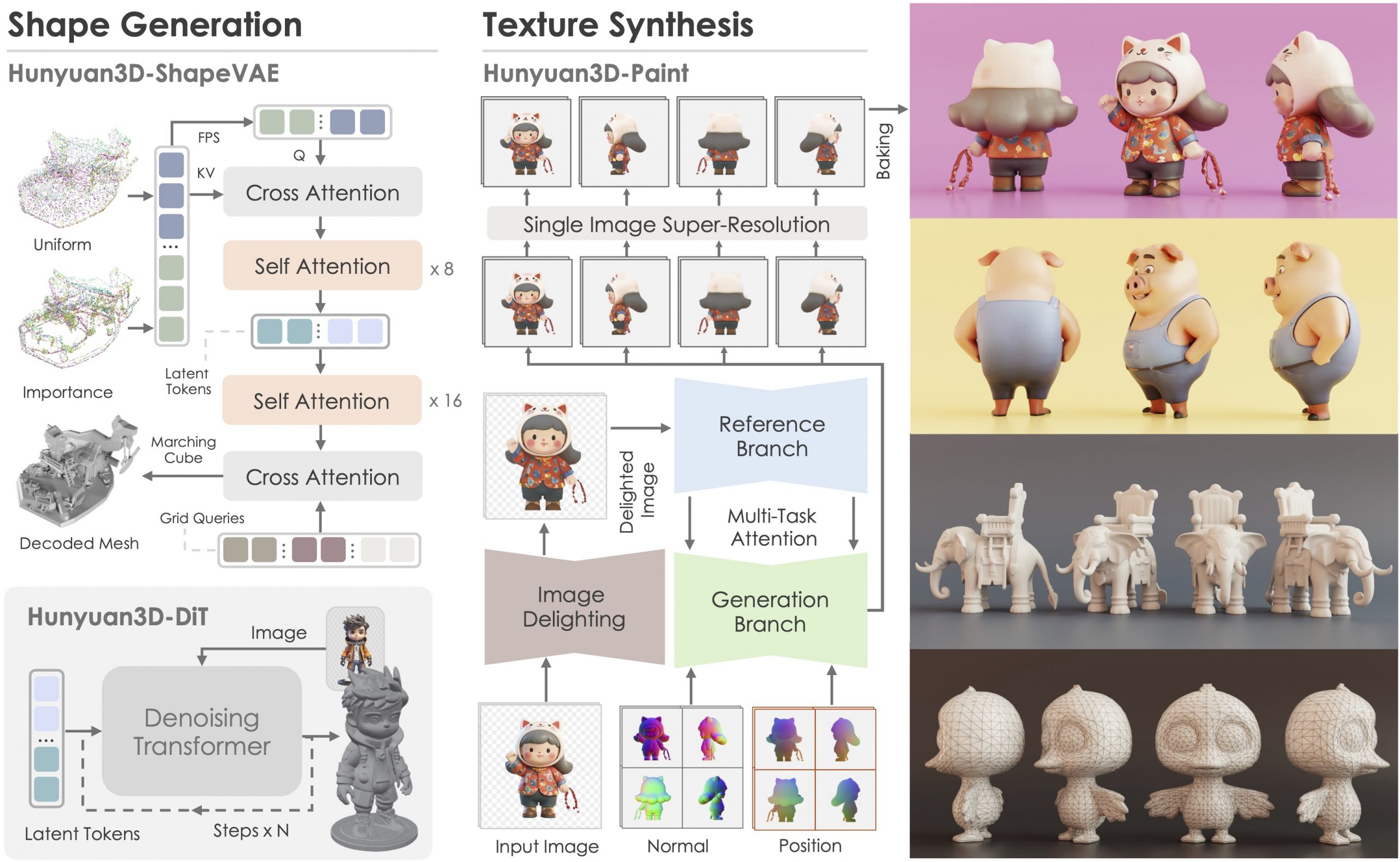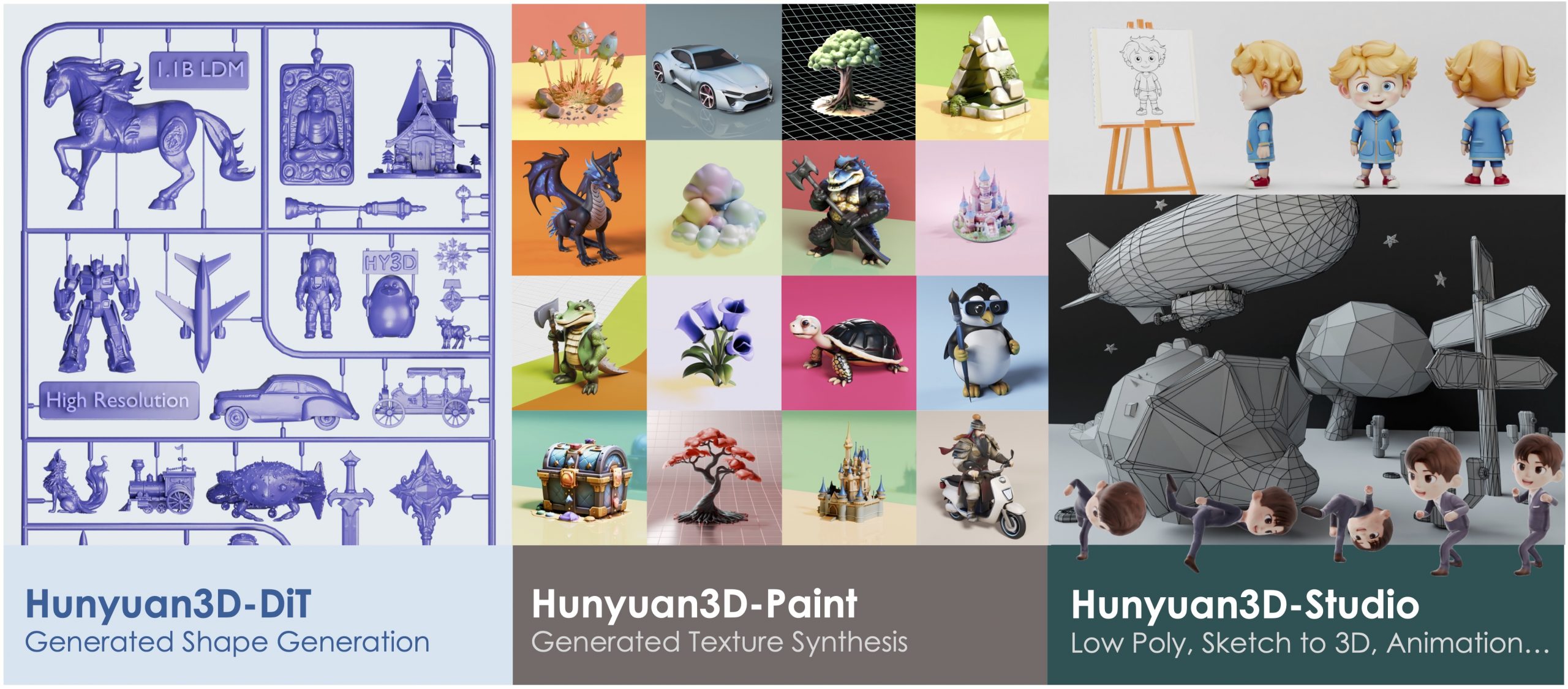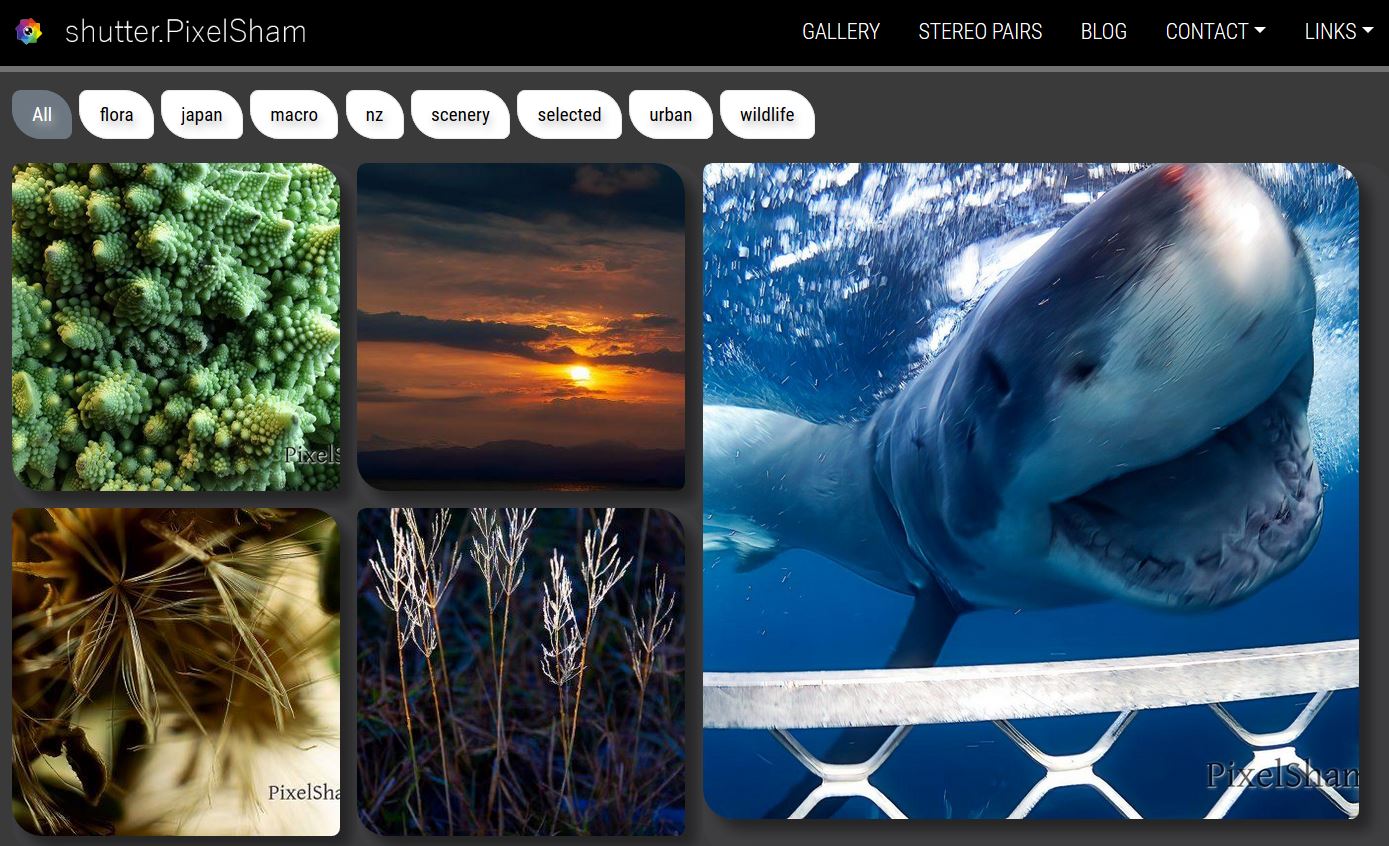BREAKING NEWS
LATEST POSTS
-
Photon Light Module System for product photography
https://www.kickstarter.com/projects/photonlms/photon-light-module-system
-
Keyword Extraction theory and practice
monkeylearn.com/keyword-extraction/
Keyword extraction is the automated process of extracting the most relevant words and expressions from text.
https://azure.microsoft.com/en-us/services/cognitive-services/text-analytics/
-
SIGGRAPH 2020 Canceled; Event Moving to Virtual Conference Format
www.awn.com/news/siggraph-2020-canceled-event-moving-virtual-conference-format
SIGGRAPH 2020 is the latest is a growing list of animation, VFX, and gaming-related events to cancel or otherwise postpone their 2020 editions, including Comic-Con, Annecy, FMX, ITFS, MIPTV, and GDC.
-
FEATURED POSTS
-
Tencent Hunyuan3D – an advanced large-scale 3D synthesis system for generating high-resolution textured 3D assets
https://github.com/tencent/Hunyuan3D-2


Hunyuan3D 2.0, an advanced large-scale 3D synthesis system for generating high-resolution textured 3D assets. This system includes two foundation components: a large-scale shape generation model – Hunyuan3D-DiT, and a large-scale texture synthesis model – Hunyuan3D-Paint.
The shape generative model, built on a scalable flow-based diffusion transformer, aims to create geometry that properly aligns with a given condition image, laying a solid foundation for downstream applications. The texture synthesis model, benefiting from strong geometric and diffusion priors, produces high-resolution and vibrant texture maps for either generated or hand-crafted meshes. Furthermore, we build Hunyuan3D-Studio – a versatile, user-friendly production platform that simplifies the re-creation process of 3D assets.
It allows both professional and amateur users to manipulate or even animate their meshes efficiently. We systematically evaluate our models, showing that Hunyuan3D 2.0 outperforms previous state-of-the-art models, including the open-source models and closed-source models in geometry details, condition alignment, texture quality, and e.t.c.
-
Is a MacBeth Colour Rendition Chart the Safest Way to Calibrate a Camera?
www.colour-science.org/posts/the-colorchecker-considered-mostly-harmless/
“Unless you have all the relevant spectral measurements, a colour rendition chart should not be used to perform colour-correction of camera imagery but only for white balancing and relative exposure adjustments.”
“Using a colour rendition chart for colour-correction might dramatically increase error if the scene light source spectrum is different from the illuminant used to compute the colour rendition chart’s reference values.”
“other factors make using a colour rendition chart unsuitable for camera calibration:
– Uncontrolled geometry of the colour rendition chart with the incident illumination and the camera.
– Unknown sample reflectances and ageing as the colour of the samples vary with time.
– Low samples count.
– Camera noise and flare.
– Etc…“Those issues are well understood in the VFX industry, and when receiving plates, we almost exclusively use colour rendition charts to white balance and perform relative exposure adjustments, i.e. plate neutralisation.”







